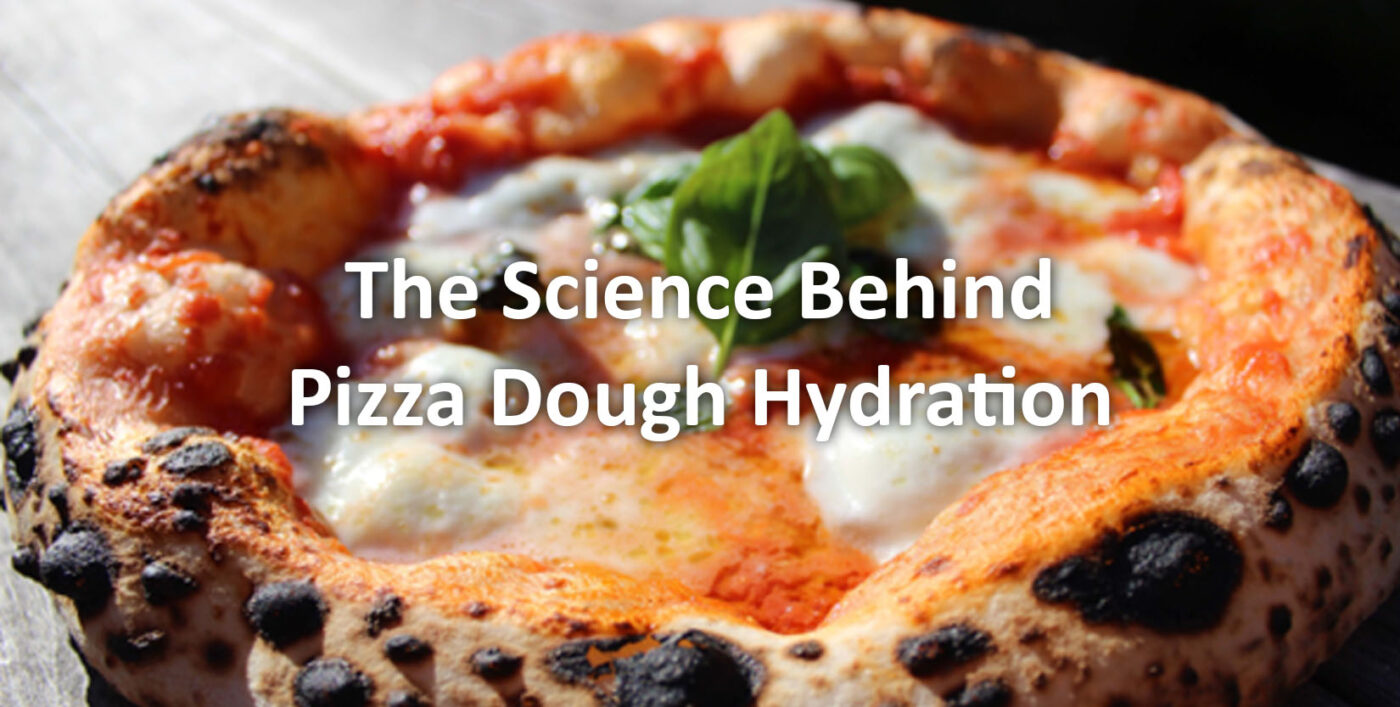Pizza Ovens, Tips & tricks!
The Science Behind Pizza Dough Hydration
Picture the perfect pizza: aerated crust that’s both chewy and packed full of flavour. What’s the secret behind such a mouth-watering experience? It’s all about pizza dough hydration.
Pizza dough is the canvas for the culinary artistry of pizza-making. To understand its magic, we must dive into the science of hydration. In this blog, we’ll explore the chemistry at play when flour, water, yeast, and salt combine to create the iconic pizza base.
We’ll uncover the role of water in gluten formation, how hydration levels affect dough texture and flavour, and the secrets used by the pros to craft dough perfection. Whether you’re a pizza lover or a curious cook, come with us on this journey through the science behind pizza dough hydration. You’ll gain a deeper appreciation for the dough that turns ordinary ingredients into a beloved culinary masterpiece. Ensuring the next pizza you launch into your Igneus wood fired pizza oven, is a slice of perfection!
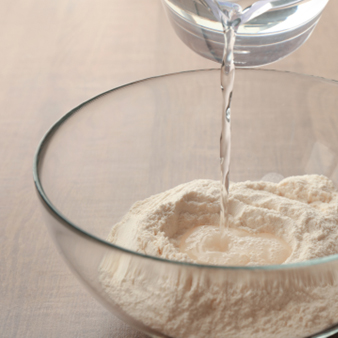
What is pizza dough hydration?
Pizza dough hydration refers to the ratio of water to flour in a pizza dough recipe. It is a critical factor in determining the texture, structure, and overall quality of the pizza crust. The hydration level is typically expressed as a percentage, representing the weight of water relative to the weight of flour used in the dough.
For example, if a pizza dough recipe has a hydration level of 60%. It means that for every 100 grams of flour, you would use 60 grams of water.
How does differing hydration levels affect the dough?
Believe it or not, hydration percentage is actually the single biggest factor that affects how your dough turns out. It has an impact on workability and movability when making the dough, but also the taste and texture of the finished pizza. A good rule of thumb is the higher the level of hydration, the harder your dough is to work with, and the chewier and more aerated it will be. Hydration levels have a direct impact on the following aspects:
- Elasticity
- Stickiness
- Density
- Aeration – how much the crust will rise and ‘puff’ up
From a scientific standpoint, the reason why higher levels of hydration allow for a more aerated crust is because the additional water provides yeast with a more favourable environment for fermentation. Yeast is responsible for producing carbon dioxide gas during fermentation, which creates bubbles in the dough. In a high-hydration dough, yeast can produce gas more efficiently, resulting in a greater volume of gas and more significant aeration.
So, what hydration level is best for my finished pizza?
Certain styles of pizza traditionally have differing levels of hydration. If you’re new to the world of making pizza dough, beginning with a 60% hydration is a good place to start, then you can experiment up or down from there. If, however you have a clear idea of the style of pizza you enjoy eating, you can go straight in for a set hydration which is aligned to that style of dough. Below, we’ve outlined some typical hydration percentages and what style of pizza they would result in.
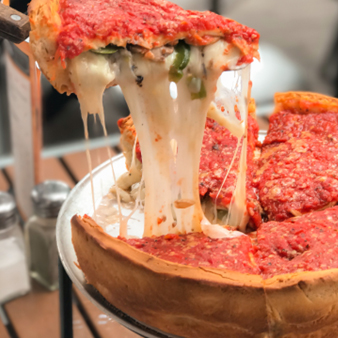
Low-hydration dough – 50 – 57%:
Low-hydration pizza doughs, typically with hydration levels below 60%, are commonly associated with pizza with a dense, firm base and crust, for example Sicilian-Style Pizza. The low hydration dough is pressed into a well-oiled pan, creating a focaccia-like texture that’s light and fluffy.
This level of hydration is also perfect for Chicago-style deep-dish pizza, which is characterised by its thick, buttery, and flaky crust that forms a bowl-like structure to hold ample toppings and cheese. The low-hydration dough helps maintain the crust’s structure and prevents it from becoming soggy under the weight of the toppings.
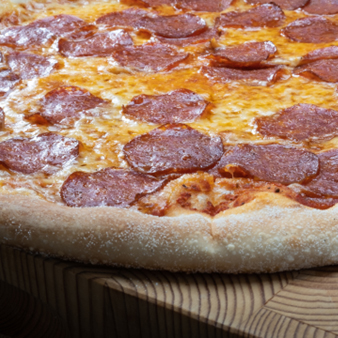
Lower-hydration dough – 60%
This is the most common hydration percentage for more “conventional” pizzas, and like we said above, it’s a good place to start when you first start your dough making journey! The characteristics of a 60% dough are;
- Relatively firm and less sticky
- It is easier to handle and shape into a pizza crust.
- Crust tends to be on the thicker side, yielding a slightly chewy and bready texture.
- Lower hydration doughs often develop a more pronounced, bread-like flavour.
A 60% hydration dough is a common choice for making New York-style pizza. New York-style pizza is known for its thin and foldable crust, with a slightly crispy exterior.
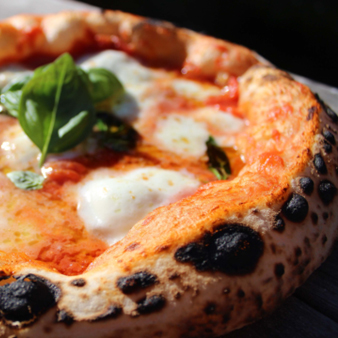
Higher-hydration dough 70%
As you increase hydration to 70% and upwards, the dough becomes more tacky and sticky, making it slightly more difficult to work with. This level of hydration is perfect for Neapolitan pizza, as the level of hydration allows air pockets to form. It’s also perfect for high temperature cooking, meaning pizzas made using a wood fired pizza oven which reach temperature of over 450°C are ideal as they can produce a delicious, slightly charred crust. Common characteristic of higher-hydration dough are:
- Soft and supple texture
- Light and Chewy Crust
- Good balance between crispiness and chewiness, depending on how it’s baked
- The dough tends to develop a more open crumb structure with irregularly sized air pockets and bubbles.
- Improved oven spring, where the dough rises and expands more during baking, resulting in a thicker, more aerated crust.
Pro Tip: Dough that’s higher in hydration can be challenging not only to work with, but also to transfer from the peel into the oven. We recommend a dusting of semolina, or a mix of semolina and flour, on your pizza peel. This allows the pizza to slide off the peel more easily, as the little balls of semolina act like mini marbles. No more stuck dough!
Conclusion
And there we have it, the science behind pizza dough hydration! We hope you found this as interesting to read as we did to write. One final top tip for anyone wanting to try making pizza dough for the first time. We highly recommend using dough proving containers, which will make your life so much easier. When you turn the dough out of the container once proved, ensure what was the bottom of the dough ball becomes the top of your pizza. This is because the top of the dough ball will naturally be slightly drier, therefore easier to slide from your peel into the oven! Win!
Thanks for reading,
Team Igneus
We know it can be hard choosing a pizza oven, our team can help you choose the right one for your needs. You can get in touch by calling us on 01423 575885
Shop now
